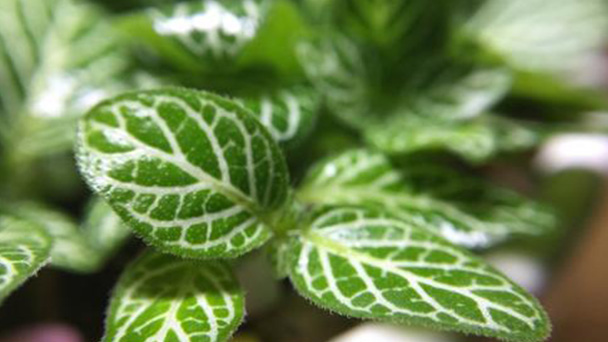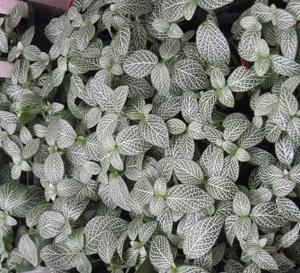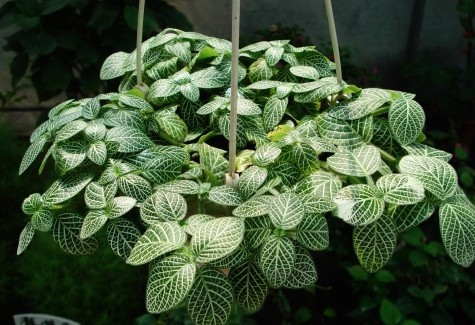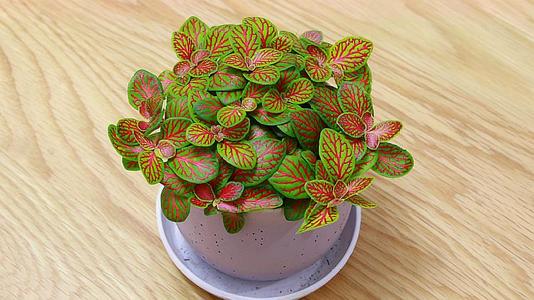Fittonia Albivenis profile
Written by Maggie
Oct 19 2021

Fittonia Albivenis is a light, small potted plant among leaf-watching plants. Because the leaf vein is clear, the leaf color is quietly elegant, the grain is symmetrical, it is loved by people deeply. It is the potted small breed that is very popular in Europe and America at present. Fittonia Albivenis has been cultivated for only half a century since it was discovered in the 1940s.
Fittonia Albivenis picture

Morphological characteristics of Fittonia Albivenis
Fittonia Albivenis is an evergreen perennial herb. Plants are low, stolon-like, stolon nodes easy to root. It’s about 5 ~ 20 cm high. Leaves are cross opposite, ovate or elliptic, stem branches, petiole, pedicel are all densely covered with hairs terminal spikes.
Flowers are complete, but the flowers are bilaterally symmetrical or radially symmetrical, usually in racemes or umbels, and beige, especially with typically colored bracts, some species quite large and bright.Calyx 4 crack or 5 crack, tube flower crown 5 crack or 2 crack, stamen pair, ovary two Chambers. General fruit has two seeds, easy to burst. Most species of seeds have a seed hook for ejecting from the new fruit. Seeds are without endosperm, and with large germ.
Fittonia Albivenis growth habit
Fittonia Albivenis prefers high temperatures, wet conditions and semi-cloudy conditions. fittonia Albivenis is a high-temperature plant and is particularly sensitive to temperature.The suitable temperature for its growth is 18 ~ 24℃. Winter temperature is not lower than 13℃, and 13 ~ 16℃ can maintain normal growth. At temperatures below 13℃, fittonia albivenis stops growing and parts of the leaves start to fall off, but the stems do not freeze. If the room temperature rises above 18℃, new leaves can continue to germinate. If the temperature is lower than 8℃, the plant will die of cold. Fittonia Albivenis scatters light best, avoiding direct light. In summer, the sun shading network should be set, and the best shading rate is 50 {bf} ~ 60 {bf}.
Fittonia Albivenis prefers moist environment and prefers sandy loam rich in humus.The growing season requires high air humidity, especially in summer, high temperature season, moisture evaporation, dry air. In addition to the increase of water basin soil moisture, leaf spraying and ground sprinkling is more necessary. Maintaining high air humidity is conducive to the growth of Fittonia Albivenis stems and leaves.

Fittonia Albivenis distribution area
Fittonia Albivenis, native to Peru, was discovered in the 1940s and has since been widely introduced and transplanted.
At present, Fittonia Albivenis is most widely distributed in South Asia, Indochina Peninsula, Africa, Brazil and Central America, and can be found in various habitats, such as dense forests, open forests, bushes, wetlands, valleys, swamps, coastal areas and coastal mangroves.
Fittonia Albivenis Propagation method
The Fittonia Albivenis propagation include cutting propagation, plant separation propagation and tissue culture propagation, among which the main propagation method is cutting propagation.
- Cutting propagation: Fittonia Albivenis can be cut and propagated all year round under the suitable temperature condition, and the cutting effect is best from May to September when the temperature is slightly higher. Cut about 10 cm long from the stolon on the side of the basin. Usually 3 ~ 4 stem nodes are needed. Remove the lower leaf blade and insert into the sand bed after a little drying.
- Fittonia Albivenis plant propagation by plant: for plants with dense stem and leaf growth, many stolons have adventified roots on the stolon nodes. As long as the stolons are over 10cm and the roots are cut off, the plants can be directly potted and restored to normal maintenance after 1 to 2 weeks in the semi-shade.
- Tissue culture propagation of Fittonia Albivenis: The fascicled buds were cut and moved into the culture medium of 1/2ms with 0.1 mg/l naphthoxyacetic acid, and adventified roots were produced in about 1 ~ 2 perimeters to form complete plants.

The main Value of Fittonia Albivenis
Fittonia Albivenis is mainly used in gardens. Its uses include:
- Used as a small potted plant -- a few cuttings are planted in a colorful pottery pot with a diameter of 10 cm and a height of 13 cm, and decorated around the cultivated soil with colored stones or moss, placed on the table or desk, which is particularly elegant.
- Used for hanging basin cultivation -- planting with hanging basin, when the basin is full, it will be placed indoors and look full of spring.
- Used for combined cultivation -- Fittonia Albivenis is one of the main auxiliary materials for combined potted plants
Fittonia Albivenis (Nerve plant) Propagation
Nerve Plant (Fittonia Albivenis) Grow & Care Tips
Latest Updated
- Benefits of Bugleweed - 7 Science-backed Health Benefits
- Bugleweed Dangers & Side Effects - Is It Poisonous?
- How to Plant Evergreen Trees - What You Should Know
- When to Plant Evergreens - Grow Guide for Evergreen Trees
- 12 Wonderful Evergreen Shrubs for Your Garden
- 12 Popular Evergreen Plants with Pictures for Beginners
- When And How To Prune A Lilac Bush Like a Pro
- How to Grow & Care for Lilac Vine (Hardenbergia Violacea)
- Japanese Lilac Tree (Syringa Reticulata) Care & Propagation Guide
- Shumard Oak Pros and Cons - What to Know
Popular Articles
- Winter maintenance of Antirrhinum Majus
- How to Grow Terminalia Mantaly Tree
- How to Grow and Care for Crossostephium Chinense
- How to grow Antirrhinum Majus in spring
- Peristeria Elata (Dove Orchid) Profile: Info & Care Guide
- Underwatered Snake Plant (Sansevieria Trifasciata) - Signs And How To Fix
- How to Care for Brazilian Jasmine Plant (Mandevilla Sanderi)
- How to Grow & Care for Graptopetalum Purple Delight in Summer
- Rosa Chinensis (China Rose): Plant Growing & Care Tips
- How to Care for Baby Sun Rose (Aptenia Cordifolia)